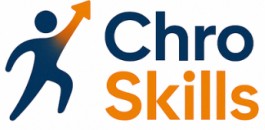
Understanding Talent Mapping
Decoding the Talent Mapping Process
In the realm of human resources, talent mapping is a strategic approach that helps organizations identify and develop the skills necessary for future success. This process involves assessing the current workforce to pinpoint skill gaps and align employee development with the company's long-term goals. By mapping talent effectively, businesses can ensure they have the right people in place to meet future challenges.
Talent mapping is not just about filling immediate vacancies; it's about understanding the potential of current employees and identifying top talent within the organization. This proactive approach to talent management allows companies to create robust succession planning strategies, ensuring that they are prepared for any changes in leadership or critical roles.
One of the key benefits of talent mapping is its ability to enhance the recruitment process. By clearly defining the skills and competencies needed for each role, organizations can streamline their hiring efforts and improve the candidate experience. This targeted approach not only attracts ideal candidates but also reduces the time and resources spent on recruitment.
Furthermore, talent mapping plays a crucial role in strategic workforce planning. By leveraging data analytics, companies can gain insights into their workforce dynamics and make informed decisions about future hiring and development needs. This data-driven approach helps organizations build a resilient workforce that can adapt to changing business environments.
For those looking to delve deeper into crafting effective career development programs in corporations, this resource provides valuable insights into aligning employee development with organizational goals.
Strategic Workforce Planning
Integrating Talent Mapping within Recruitment Strategies
Strategic workforce planning is instrumental in aligning the organizational goals with the skills and competencies required for future growth. Talent mapping plays a pivotal role in this process as it helps company leaders to maintain a competitive edge in the recruitment process. By thoroughly examining the current workforce and identifying potential skill gaps, organizations can effectively plan for future needs. Incorporating talent mapping into recruitment strategies allows businesses to not only identify top talent but also to build a robust talent pool. This proactive approach ensures that the organization is prepared with ideal candidates to fill roles as they become available, enhancing the efficiency of talent acquisition. By mapping talent accurately, organizations can prioritize long-term succession planning and make informed decisions that foster the development of employees. The mapping process should also focus on understanding the skills competencies of both current employees and future candidates. This helps businesses to craft development plans and best practices that address skills gaps, ultimately building a more capable and resilient workforce. Such initiatives can significantly improve candidate experience, making the hiring process smoother and more appealing to ideal candidates. For further insights into optimizing recruitment strategies and mastering high-volume recruitment, check out this valuable resource on essential skills for chief human resources officers.Enhancing Employee Development
Fostering Growth through Talent Development
The current landscape of human resources demands more than just filling roles; it requires a proactive approach to harnessing the potential of every employee. This is where the art of talent mapping plays a pivotal role in enhancing employee development. Organizations today must focus on identifying skill gaps and opportunities for growth to maintain a competitive edge in their respective industries. One of the most effective strategies in this process is the implementation of development plans tailored to both the company's long-term goals and the individual aspirations of employees. By understanding the unique skills and competencies of each team member, businesses can effectively align their workforce planning with their broader objectives, ensuring a cohesive path toward greatness. Moreover, organizations can employ succession planning as a key element in strategic workforce development. By mapping talent within the company, they not only identify ideal candidates for future leadership roles but also ensure a robust pipeline of top talent ready to step up when needed. This proactive approach to talent management guarantees a resilient workforce capable of navigating challenges and driving cultural change alongside business growth. The benefits of talent development are not limited to the organization alone. For employees, this process fosters an immensely valuable candidate experience. It provides them with clear insights into their career trajectory and the skills they must acquire to reach the next level. This, in turn, translates into increased engagement, higher retention rates, and a positive company culture. In essence, effective talent mapping, when combined with structured development initiatives, serves as a powerful catalyst for unleashing the potential of an organization’s talent pool. By continually adapting strategies to meet the evolving needs of business and employees alike, organizations can remain a step ahead in the competitive arena, ensuring mutual growth and success. For more engaging insights on fostering growth and development, consider exploring these inspiring icebreaker ideas that can help bring teams closer together and ignite new ideas.Driving Organizational Change
Embracing Change for Organizational Growth
Driving organizational change is a pivotal aspect of a Chief Human Resources Officer's role. In today's fast-paced business environment, companies must adapt to survive and thrive. This requires a strategic approach to talent mapping, ensuring that the right skills and competencies are in place to support transformation initiatives.
Effective change management begins with understanding the current workforce landscape. By leveraging data analytics, HR leaders can identify skill gaps and develop targeted development plans to bridge these gaps. This process not only enhances employee development but also prepares the organization for future challenges.
Moreover, fostering a culture of continuous learning and adaptability is crucial. Encouraging employees to embrace new skills and competencies ensures that the organization remains resilient in the face of change. This involves creating a supportive environment where employees feel empowered to innovate and contribute to the company's long-term success.
Another key element is succession planning. By mapping talent and identifying top talent within the organization, HR leaders can ensure a seamless transition during periods of change. This proactive approach to talent management helps maintain business continuity and supports strategic workforce planning.
Ultimately, driving organizational change through effective talent mapping and development strategies positions companies to achieve their business objectives. By aligning the workforce with the company's vision and goals, HR leaders can create a dynamic and agile organization ready to tackle future challenges.













